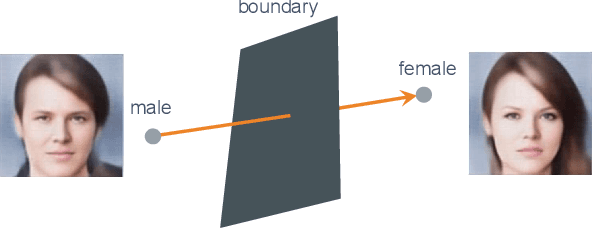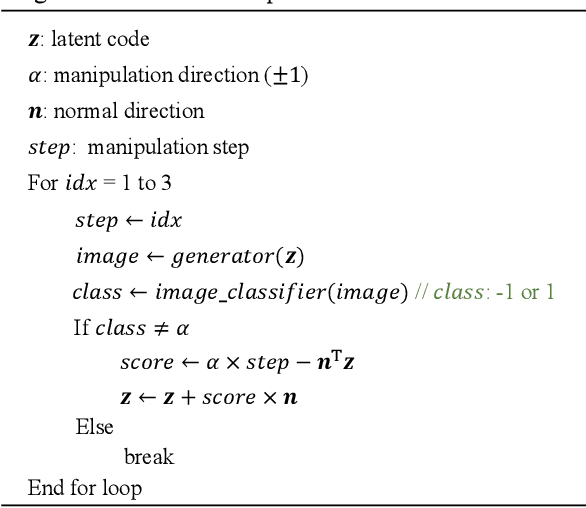Pei-Chun Chang
SASMU: boost the performance of generalized recognition model using synthetic face dataset
Jun 02, 2023



Abstract:Nowadays, deploying a robust face recognition product becomes easy with the development of face recognition techniques for decades. Not only profile image verification but also the state-of-the-art method can handle the in-the-wild image almost perfectly. However, the concern of privacy issues raise rapidly since mainstream research results are powered by tons of web-crawled data, which faces the privacy invasion issue. The community tries to escape this predicament completely by training the face recognition model with synthetic data but faces severe domain gap issues, which still need to access real images and identity labels to fine-tune the model. In this paper, we propose SASMU, a simple, novel, and effective method for face recognition using a synthetic dataset. Our proposed method consists of spatial data augmentation (SA) and spectrum mixup (SMU). We first analyze the existing synthetic datasets for developing a face recognition system. Then, we reveal that heavy data augmentation is helpful for boosting performance when using synthetic data. By analyzing the previous frequency mixup studies, we proposed a novel method for domain generalization. Extensive experimental results have demonstrated the effectiveness of SASMU, achieving state-of-the-art performance on several common benchmarks, such as LFW, AgeDB-30, CA-LFW, CFP-FP, and CP-LFW.
Facial Image Reconstruction from Functional Magnetic Resonance Imaging via GAN Inversion with Improved Attribute Consistency
Jul 03, 2022



Abstract:Neuroscience studies have revealed that the brain encodes visual content and embeds information in neural activity. Recently, deep learning techniques have facilitated attempts to address visual reconstructions by mapping brain activity to image stimuli using generative adversarial networks (GANs). However, none of these studies have considered the semantic meaning of latent code in image space. Omitting semantic information could potentially limit the performance. In this study, we propose a new framework to reconstruct facial images from functional Magnetic Resonance Imaging (fMRI) data. With this framework, the GAN inversion is first applied to train an image encoder to extract latent codes in image space, which are then bridged to fMRI data using linear transformation. Following the attributes identified from fMRI data using an attribute classifier, the direction in which to manipulate attributes is decided and the attribute manipulator adjusts the latent code to improve the consistency between the seen image and the reconstructed image. Our experimental results suggest that the proposed framework accomplishes two goals: (1) reconstructing clear facial images from fMRI data and (2) maintaining the consistency of semantic characteristics.
MS-SincResNet: Joint learning of 1D and 2D kernels using multi-scale SincNet and ResNet for music genre classification
Sep 18, 2021



Abstract:In this study, we proposed a new end-to-end convolutional neural network, called MS-SincResNet, for music genre classification. MS-SincResNet appends 1D multi-scale SincNet (MS-SincNet) to 2D ResNet as the first convolutional layer in an attempt to jointly learn 1D kernels and 2D kernels during the training stage. First, an input music signal is divided into a number of fixed-duration (3 seconds in this study) music clips, and the raw waveform of each music clip is fed into 1D MS-SincNet filter learning module to obtain three-channel 2D representations. The learned representations carry rich timbral, harmonic, and percussive characteristics comparing with spectrograms, harmonic spectrograms, percussive spectrograms and Mel-spectrograms. ResNet is then used to extract discriminative embeddings from these 2D representations. The spatial pyramid pooling (SPP) module is further used to enhance the feature discriminability, in terms of both time and frequency aspects, to obtain the classification label of each music clip. Finally, the voting strategy is applied to summarize the classification results from all 3-second music clips. In our experimental results, we demonstrate that the proposed MS-SincResNet outperforms the baseline SincNet and many well-known hand-crafted features. Considering individual 2D representation, MS-SincResNet also yields competitive results with the state-of-the-art methods on the GTZAN dataset and the ISMIR2004 dataset. The code is available at https://github.com/PeiChunChang/MS-SincResNet
 Add to Chrome
Add to Chrome Add to Firefox
Add to Firefox Add to Edge
Add to Edge